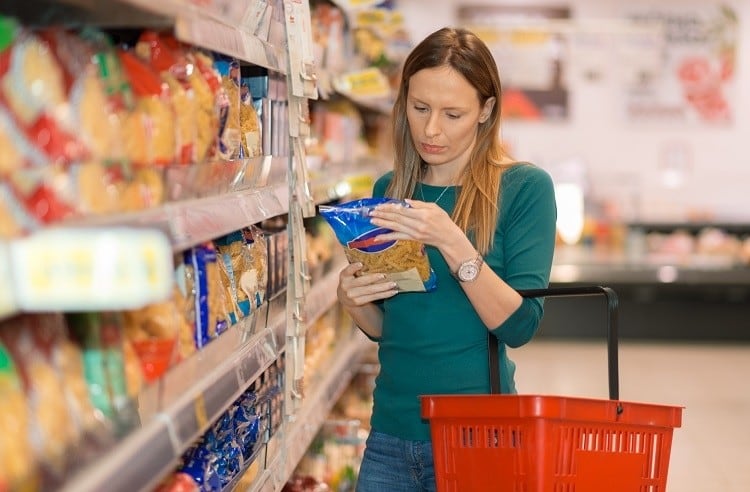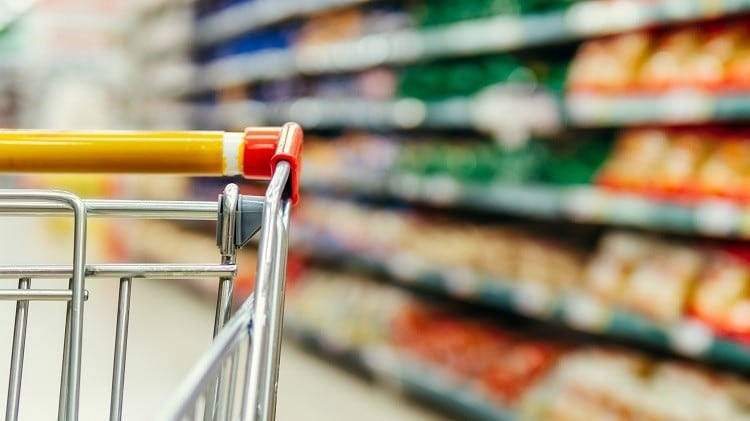Inflation might be coming off the boil and Europe could be leaving peak prices in the rear-view mirror, commentators examining economic trends in the eurozone and UK are cautiously suggesting.
Inflation in the eurozone dropped for a second consecutive month in December, coming in at 9.2% year on year versus 10.1% the month before, according to Eurostat. In the UK, meanwhile, the Consumer Price Index (CPI) rose by 10.5% in the 12 months to December 2022, down from 10.7% in November.
The decrease is largely driven by lower fuel prices, with European economies – helped in part by a temperate winter - showing unexpected resilience in the face of the bloc’s energy sanctions imposed on Russia over its invasion of Ukraine. Gas prices are now back around where they were before Russia initiated military action last year. But for many households the cost of living remains eye-wateringly high.
“While the rate of inflation continues to ease away from the 41 year high reported in October, it will do little to lighten the financial burden facing many households at present,” observed Bradley Post CEO of RIFT Tax Refunds. “As it stands, we seem to have reached the peak and have started our descent, but looking down, there’s still a very long way to go.”
Indeed, the figures on food price inflation are pretty stark. The latest data released by Eurostat show that in December, food, alcohol and tobacco prices climbed at a pace of 13.8% annually. In the UK, numbers released by the Office for National Statistics paint a similar picture of double-digit rises. Food price inflation in the year to December rose 16.8% in the country.
Purchasing power takes a hit: ‘We all feel it’
The result, inevitably, is a more cost-conscious shopper, Ingredion VP of global marketing Charlotte Commarmond told FoodNavigator.
The inflationary environment means ‘consumers only have a certain amount to spend’, she explained speaking at trade show Fi Europe in Paris last month. But, Commarmond reflected, this pressure didn’t come out of the blue. “We spotted this coming in 2022. To some extent, we saw it with the pandemic: consumers being cautious about where they spend their money,” the Ingredion executive shared.

Waning purchasing power is a challenge expected to continue influencing the food and beverage landscape as a result of the grim economic outlook for 2023. “Everyone is going through a cost-of-living crisis at the moment,” observed Vicky Davies, global marketing director for performance, active and medical nutrition at Dutch dairy ingredients supplier FrieslandCampina Ingredients. “And I think it’s just the beginning of it… [2023] will be tougher. Consumer purchase power has been dramatically affected. We all feel it.”
Likewise, plant-based oil supplier Bunge Loders Croklaan is also watching the situation ‘very closely’ and predicting inflation will remain ‘incredibly high’ in the coming year. Mark Stavro, senior director, global marketing & product manager at Bunge, said he expects 2023 will be ‘tough’. “You’ve got inflation, a potential recession…markets will start to go wild and there will be more categories demanding oil beyond food,” he told us at Fi Europe.
Supply stability will be important in 2023
Extreme weather events, coupled with limited supply of raw materials from Ukraine since Russia’s invasion, have disrupted global supply chains. Ingredients companies are taking notice.
“Sometimes sourcing is tight, and then we still face some practical challenges, for example logistics and availability of drivers,” Renee Boerefijn, director of innovation at Bunge, explained.
French ingredients supplier Roquette, too, is anticipating crop availability will be a challenge across the industry in 2023. “There are a couple of challenges [coming in 2023], inflation is one, and the availability of crops – coming as a consequence of the war in Ukraine and the consequence of the drought in Europe – is another,” Pascal Leroy, senior vice president of core ingredients at Roquette explained.
Delivering for the customer and proving yourself a reliable partner adept at managing the obstacles ahead will be critical for ingredient suppliers. “It’s going to be challenging, but we are here for that…we have availability for 2023 and beyond," Leroy stressed.
Bunge says it too is ‘extremely well positioned’ to support its customers, with options in place to ‘minimise the pain’. Industry needs to come together to ‘make it work’, stressed Boerefijn. “Think back to the sunflower [shortage and increased prices] at the beginning of last year. There were tremendous efforts and also great collaboration throughout the market, to make sure we didn’t have empty shelves.
“This is a perfect example of how we [can approach challenges] going forward. The most important thing is business continuity.”

Nutrition and sustainability remain important to innovation
If the challenged supply and demand outlook is unlikely to ease in the near-term, what impact can we expect it to have on innovation pipelines this year? Will NPD focus on a drive to cut costs and substitute in less expensive ingredients? Or can we expect food and beverage brands to cut their investment in R&D as they work to keep their own costs under control and deliver the lowest possible prices to consumers?
ABF Ingredients CEO Saadane-Oaks observed that while food brands are still innovating, their R&D pipelines might be looking a little thinner than pre-crisis. “We are seeing that the food industry continues to invest and innovate. But manufacturers are more cautious than they used to be. There is not as much of an innovation pipeline… I wouldn’t describe it so much as a slowdown as increased selectivity. I see more prioritisation – or the de-prioritisation of higher risk, longer term investments,” she told FoodNavigator.
This means that areas where ‘the science is not yet established’, meaning it will take longer to bring new products to the market and generate returns, have been ‘put on the back burner’. Nevertheless, Saadane-Oaks still sees R&D bright spots, with innovation continuing apace to grow categories like nutritional products and plant-based.
FreislandCampina, certainly hopes its positioning as a supplier of nutritional ingredients will act as something of a buffer to the headwinds faced by the industry. “The economies around the world are fluctuating. It’s bound to affect us. But we focus on high-end nutrition, and we will always strive to deliver that to customers,” Davies stressed.
Ingredion’s Commarmond forecasts price positioning will be used to complement other priorities to provide brands with valuable points of difference. “Price is a fundamental proposition and it sits alongside the other trends that will be important in 2023. Nutrition, taste, sustainability and affordability… Cost and value are top of mind, but people still prioritise taste and sustainability.”
Nevertheless, Commarmond conceded, consumers might be a little bit less willing to reach deeper into their pockets to fund brands' sustainability work. “In an inflationary environment… maybe sustainability is more in the 'nice to have' bucket. But we know it is there and very important for the long-term.”

